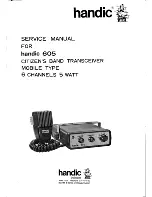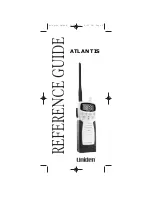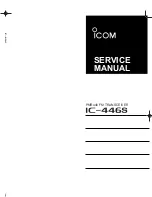
Welcome to Yaesu.com
There are two Notch Filter circuits in the Mark-V and Field. The "IF Notch" is a "traditional" manual 455 kHz Notch filter that you can adjust by ear, and see the
effects on the S-meter. The Auto DSP Notch Filter is a seeking audio notch that is outside the AGC loop, but is very effective in taking out multiple heterodynes.
The other setting is "SELECT" which combines the two Notch Filters. You use the Notch control to reduce the S-meter reading on teh interfering carrier as much
as posisble, and the Auto Notch then cleans any residual bleed-through. The combination is very effective.
What is the "VRF" and why isn't it automatic?
The "VRF" (Variable RF filter) is a time-honored design tool: the Preselector. It is a passive filter in the RF front end, before any active devices like preamplifiers,
etc., and its job is to provide the first line of defense against strong out-of-band signals. In transceivers in earlier days, you would always "swoosh" a control to
peak the noise; in reality, what you were doing was to peak the center frequency of the Preselector filter onto the frequency on which you were operating. The
need for RF filtering is even greater today than it used to be, owing to the higher levels of spectrum pollution.
It is highly effective. In ARRL's Product Reviews of the Mark-V and Field, the VRF permitted the measurement of the best 2nd-order Dynamic Range of any
product they have tested. In the 2nd-order DR tests, two signals are injected (one each at 6 MHz and 8 MHz, and the receiver is tested for an intermodulation
response at 14 MHz.
The VRF also has in-band applications, too, and that is why we allowed manual adjustment. Let's say you are operating on Field Day or the IARU Contest, with
two stations on-site on 7 MHz; if you are the 40 CW station, you can deliberately adjust the VRF for a peak below the 7 MHz band, so as to attenuate the signal
from the 7 MHz SSB station about 200 kHz higher in the band. This can be a significant factor in co-location interference reduction.
Can I set the "VOX" Delay separately for CW and SSB?
Yes! Menu 7-5, labeled "KYR-DLY," allows you to set the pseudo-VOX "hang time" of the transmitter after you stop sending. It is the equivalent of VOX Delay on
SSB, only Menu 7-5 works on CW.
A setting of about 0.25 to 0.3 second is satisfactory in most cases.
No. The "Y" connection needed to accommodate (A) the output from the internal keyer and (B) the output from the external keyer is buried inside an IC, and
there is no work-around.
You can, however, use an external keyer and the computer-driven key line, via a "Y" connector, and it should work fine if both are configured for "positive"
keying. And some contest software lets you connect your paddle to the LPT port, eliminating the need to use two keying lines.
Do you have any recommendations for packing my transceiver for air travel?
As it turns out, the original factory packing is excellent for air travel. We recommend putting the original double box inside a third box, for extra protection, but
the original factory foam packing provides excellent protection for the front panel knobs and switches.
For U.S. travelers, the airport inspectors may well open the box. It is a good idea to have the Instruction Manual packed on top, in case they are suspicious as to
what this apparatus is. They will tape the box shut after their inspection is complete.
If you are considering packing the radio inside something like a "Pelican®" case, be absolutely certain to provide proper air space around all protruding knobs
and switches on the front panel, and be sure there is no way the radio can migrate around so as to put pressure on the knobs, especially the main tuning knob. If
the case is dropped in such a way as to cause the main or sub tuning knobs to push inward, the shock will probably fracture a number of copper traces on the
Control Unit, and this is a catastrophe.
Can I view the Operating Manual online?
Yes. Click on the "Files" tab on the main Mark-V Field product page, and you will see links to the brochure, as well as both English and Spanish versions of the
Operating Manual.
What is "IDBT" and what does it do for me?
In the original FT-1000MP, the user had to go into the Menu to align the bandwidth (on SSB) of the EDSP Bandpass Filter. This was enhanced on the Mark-V and
Field upgrades to this product.
On the Mark-V and Field, the new "IDBT" (Integrated Digital Bandwidth Tracking) system utilizes the fact that the WIDTH and SHIFT control positions may be
read by the microprocessor. Their settings, and the IF filters selected, are used to program the EDSP so as to "overlay" the passband of the EDSP Bandpass Filter,
to make the DSP bandwidth the same as the analog IF bandwidth. This greatly simplifies operation, and also ensures that the EDSP bandwidth cannot be wider or
narrower than the analog IF bandwidth.
The result is a much quieter receiver, with "brick-wall" selectivity and no chance for AGC "pumping" caused by a mismatch between the analog and digital
selectivity systems.
http://www.yaesu.com/indexVS.cfm?cmd=DisplayProducts&ProdCatID=102&en...ID=65&isArchived=0&currTab=tab_FAQs&currDiv=FAQsDiv&ExpandID=213,FAQs (2 of 3)21/07/2006 9:41:28 AM





















